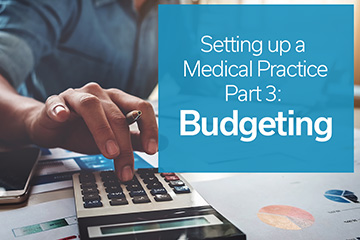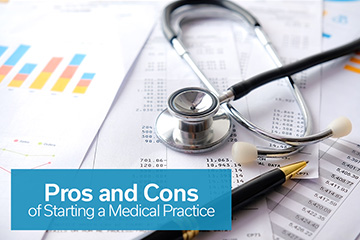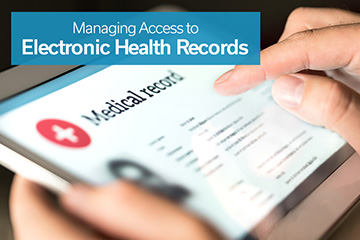
Setting up a Medical Practice Part 3: Budgeting
Creating a budget and a plan will show you how much money is coming into your medical practice and how those funds are being spent as well as provide you with a clear picture of your practice’s finances and what you can expect on a yearly basis.
Here are a few tips you should keep in mind when budgeting for your medical practice:
1. Be realistic about your goals.
As you may know, operating a medical practice can be unpredictable sometimes. Creating a good budget to set realistic expectations will contribute greatly to your medical practice’s success.
Create a special reserve for new business opportunities while saving capital from your regular business expenditures will allow you to save and budget for future growth opportunities. The capital gained from this will enable you to make quick decisions or expand business operations when needed. It can even be used as a safety net during slower economic times.
2. Flexibility is key.
Review and revise your budgets frequently by using up-to-date data. This will allow you to stay flexible and make amends to your budget whenever the need arises. Being flexible can help you answer questions throughout the year such as where do you currently stand financially? What can you afford right now? How much is your practice projected to make this year?
3. Don’t ignore historical data.
If you’re starting a new medical practice, research financial reports and studies in your industry to better understand changing trends over multiple years. Additionally, reaching out to your colleagues who’ve been in the business of setting up a medical practice will greatly increase your understanding and knowledge.
4. Create a wish list.
When improving your practice’s bottom line, creating a wish list of purchases will paint a clearer picture. Make sure to narrow it down to items that will assist in meeting your long-term goal. Ask yourself questions such as how will these items benefit your patients? Will it help increase productivity overall? Can I afford these items?
5. Insurance is essential.
Implementing clear policies and buying insurance for your practice is an essential component of this business. It is important that space is created in your budget for insurance and that additional layer of security.
Obtaining malpractice insurance, considering group health insurance, and getting office liability insurance are a few tips to keep in mind when buying insurance.
Investing in insurance and establishing clear policies will allow your practice to perform its most important task which is to care for patients.
6. Project for the upcoming year.
To calculate projections for the upcoming year, make sure you assess all of your variable and fixed expenses. Performing a cost-analysis on certain departments and specific services will assist you when calculating your projections.
You’ll get a clear sense of your profit and loss, balance sheet, and cash flow projections once you have your revenue projected. A few items that you need to make sure are on your list of expenses are office and medical supplies, furniture for the office, computers and telephones as well as insurance, accounting, salaries of staff and rent of your medical practice.
7. Monitor your budget regularly for optimal performance.
You must make it a priority to review your budget on a monthly basis as this will assist you in identifying fluctuations and any unexpected aspects in the business or the market.
A few methods to monitor your budget are tracking all of your expenses in a secure document, comparing actual finances and projections of your practice regularly, and modifying your budget based on your learnings and evaluations.





